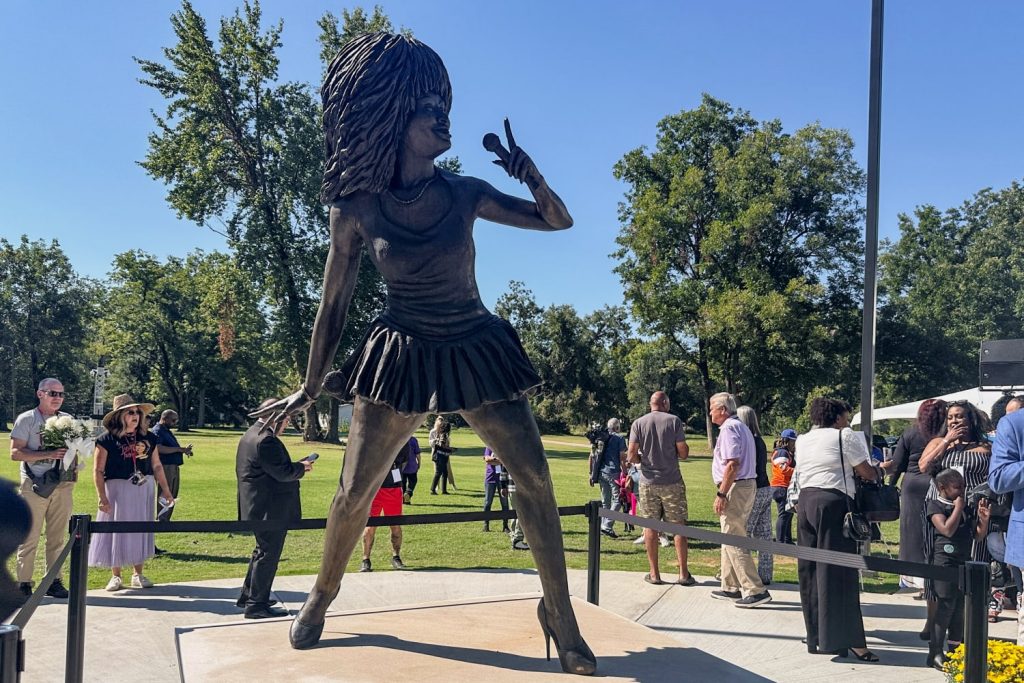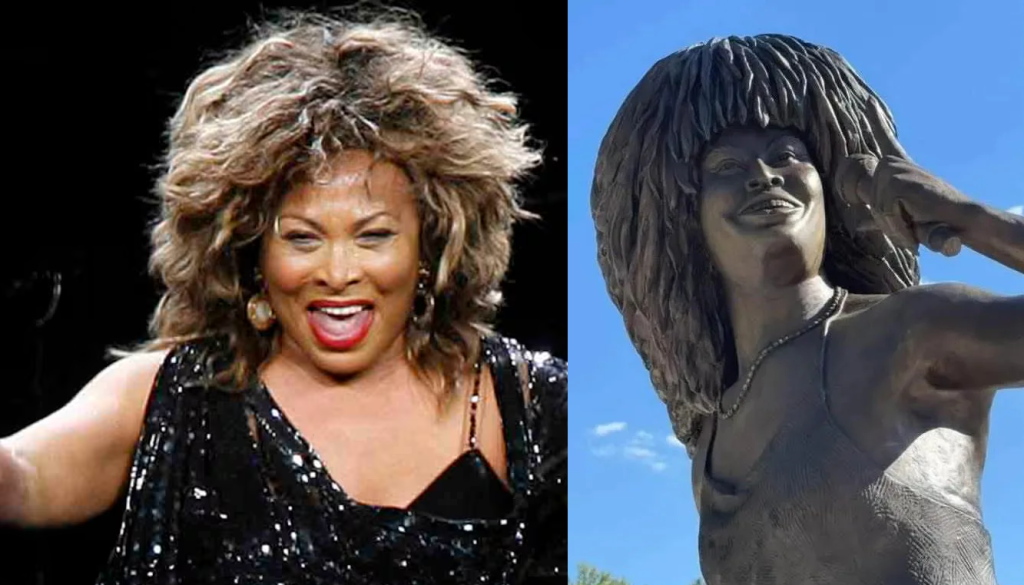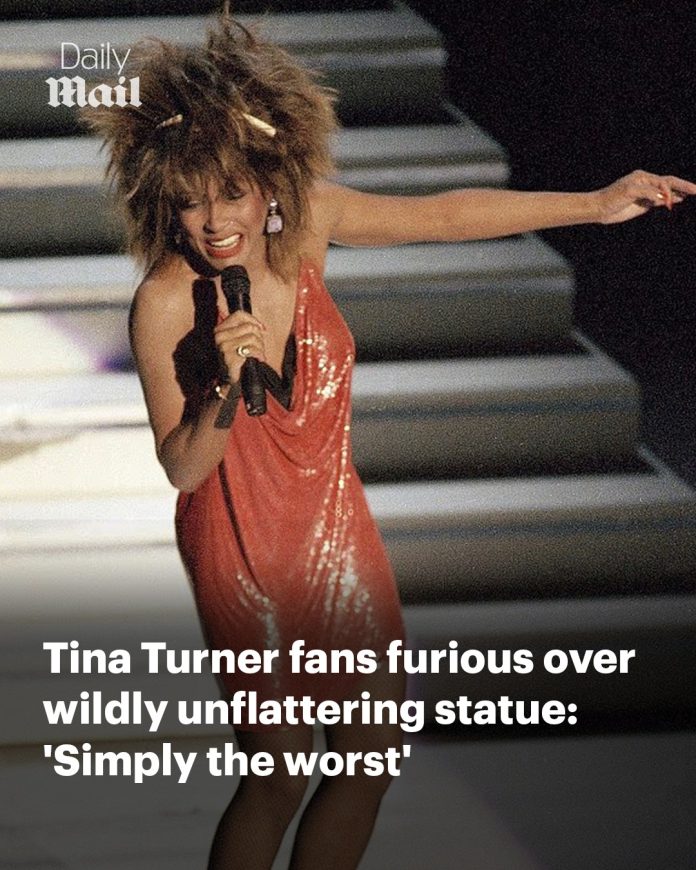What are Tina Turner fans mad about? Let’s find out below. In recent days, admirers of the legendary singer Tina Turner have expressed outrage over a newly unveiled statue intended to honor her legacy. Rather than celebrating her musical brilliance and enduring spirit, many feel the likeness falls short—in fact, it has attracted strong criticism for being unflattering and almost comical. What was meant to be a tribute has instead stirred controversy.
When the statue was revealed, fans immediately took to social media and press outlets to voice their disappointment. What many expected to be a dignified homage turned into fodder for memes, sarcastic remarks, and heated debate. The main point of contention is that the statue, rather than capturing Tina Turner’s electrifying presence and charisma, seems to render her as stiff, awkward, or even caricature-like.
Some critics say the facial features appear distorted or off in proportion. Others point to the pose, describing it as unnatural or uninspired. One common sentiment is that the statue fails to evoke the energy, strength, and sensuality that Tina Turner embodied throughout her life and performances. In short: the public feels it misses the essence of the icon it was intended to celebrate.

Fans also compared it to prior statues of other musicians or cultural figures, arguing that those looked far more lifelike, respectful, and artistically accomplished. Many expressed that this new piece feels rushed or lacking in creative vision. The reaction has been nearly unanimous—some calling it “the worst,” others saying it borders on disrespect.
The uproar around this statue highlights common pitfalls when creating commemorative sculptures for beloved figures:
- Misjudging likeness
Capturing someone’s recognizable features is already a challenge, especially with well-known public figures. If the proportions, facial expressions, or posture feel off, observers often react harshly—after all, everyone has their mental image of how the person looked. - Missing the personality
A good statue conveys more than physical appearance—it should evoke the person’s spirit. For a performer known for dynamic stage presence and emotional power, a static, reserved pose may feel antithetical to what she represented. - Artistic interpretation vs. realism
Some sculptors favor symbolic or stylized representations over literal facsimiles. But when the public expects realism, the divergence between interpretation and expectation can provoke backlash. - Technical execution and craftsmanship
Even a strong design can be undermined by sloppy execution—unrefined surfaces, awkward joints, or finish problems can all degrade the final impact. - Public expectations and emotional investment
Fans often feel personal ownership over the memory of a beloved figure. When a monument doesn’t align with those memories, emotions run high. Criticism can be especially fierce when an iconic, widely adored artist is involved.
Why This Case Sparked Especially Fierce Criticism
Because Tina Turner was more than just a singer—she was a force: resilient, bold, passionate, and ground-breaking. Her performances were electrifying, her energy magnetic, and her presence impossible to ignore. Fans rightly expect that any tribute aim high.
In this instance, they perceive a mismatch. They want a monument that doesn’t just look like her, but feels like her: a statue that breathes life, confidence, and strength. The disappointment seems rooted less in harsh judgment and more in affection and reverence gone unmet.

There’s also the legacy risk: statues are intended to endure, becoming part of how future generations remember a figure. If this tribute is viewed as subpar from the start, it may reframe Tina Turner’s public memory in unintended ways. Some fans worry that this could overshadow—or at least complicate—her image in the cultural landscape.
Could Redemption Be Possible?
Even now, changes might be possible. Some have suggested modest alterations: refining facial features, adjusting posture, or reworking the expression to better reflect Tina’s warmth and power. If the artist or commissioning body is responsive, an updated version might calm the critics and restore dignity to the project.
Beyond repairs, the critics’ outcry reflects a broader lesson: when honoring iconic figures, thoughtful planning, community input, and fidelity to the subject’s essence matter a great deal. The ambition must match the admiration the public holds for the individual.

















